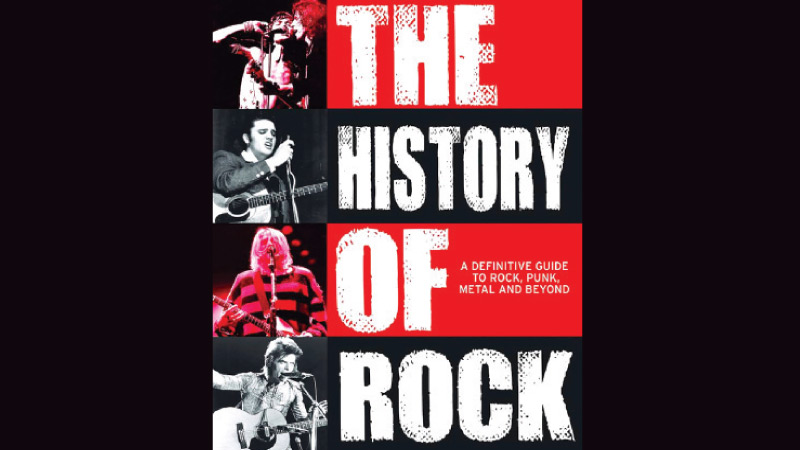Rock music, a genre that has taken the world by storm, has a rich and vibrant history that spans over half a century. From its humble beginnings in the mid-20th century to its evolution into countless subgenres, rock music has continually pushed boundaries and defined generations. Let’s take a journey through time and explore the fascinating history of rock music.
Birth (1950s)
The roots of rock music can be traced back to the 1950s when it emerged as a blend of various musical influences, including rhythm and blues, gospel, and country. One of the genre’s pioneers, Chuck Berry, is often credited with creating the iconic rock ‘n’ roll sound with songs like “Johnny B. Goode” and “Roll Over Beethoven.” Rock ‘n’ roll was all about youthful rebellion, energy, and rhythm.
The British Invasion (1960s)
The 1960s saw the rise of the British Invasion, a period when British bands like ‘The Beatles’, ‘The Rolling Stones’, and ‘The Who’ took the world by storm. These bands not only revitalized rock music but also introduced a new level of songwriting and musicianship. ‘The Beatles’, in particular, had a profound impact on the genre, pushing the boundaries of what could be achieved in the recording studio.
Psychedelic and counterculture (Late 1960s)
As the 1960s progressed, rock music began to explore new frontiers, with the advent of psychedelic rock. Bands like The Jimi Hendrix Experience, Pink Floyd, and Jefferson Airplane embraced experimental soundscapes and lyrics, often influenced by the counterculture movement and the use of mind-altering substances. The Woodstock Festival in 1969 became an iconic moment in rock history, symbolizing the spirit of the era.
Progressive and Hard Rock (1970s)
The 1970s brought further diversification of the rock genre. Progressive rock bands like Pink Floyd and Yes created complex, multi-part compositions, while hard rock bands such as ‘Led Zeppelin’ and ‘Deep Purple’ cranked up the volume and laid the foundation for heavy metal. This era was also marked by the emergence of glam rock with artists like David Bowie and T. Rex.
Punk, New Wave, and Alternative (Late 1970s to 1980s)
The late 1970s and early 1980s gave rise to the punk and new wave movements, characterized by raw, energetic, and rebellious music. Bands like ‘The Sex Pistols’ and ‘The Clash’ led the punk revolution, while artists like Blondie and Talking Heads brought innovation to the new wave scene. This period also marked the birth of alternative rock, with bands like R.E.M. and The Replacements.
Grunge and the 1990s
The 1990s witnessed the meteoric rise of grunge, with Seattle-based bands like ‘Nirvana’, ‘Pearl Jam’, and ‘Soundgarden’ defining the era. Grunge music’s raw, introspective lyrics and distorted guitar riffs resonated with a generation disenchanted with mainstream culture. Meanwhile, alternative rock continued to thrive, with bands like ‘Radiohead’ and ‘The Smashing Pumpkins’ pushing the boundaries of the genre.
The present Rock scene: A global phenomenon
In the 21st century, the rock music scene has continued to thrive on a global scale. While it may not dominate the charts in the same way it once did, rock remains a passionate and influential genre with a dedicated fan base. Let’s delve into the state of rock music in the present day.
Diverse subgenres and cross-pollination
One of the most striking aspects of the contemporary rock scene is its diversity. A multitude of subgenres and hybrid styles have emerged, catering to a wide range of tastes. Post-rock bands like Explosions in the Sky and Godspeed You! Black Emperor have gained a cult following for their instrumental, atmospheric compositions, while the garage rock revival has produced acts like ‘The White Stripes’ and ‘The Black Keys’. Moreover, bands like ‘Muse’ and ‘Arctic Monkeys’ have combined elements of alternative rock, progressive rock, and even electronic music to create their unique sound. This cross-pollination of styles and influences keeps the genre fresh and relevant.
International Rock Stars
The rock scene is no longer confined to the English-speaking world. Bands and artists from various countries have made significant contributions to the genre. Japan has a thriving rock scene with bands like ONE OK ROCK gaining international recognition. In South Korea, bands like DAY6 have garnered a dedicated following, while Iceland has produced artists like Sigur Rós known for their ethereal soundscapes. This global diversity has enriched the genre, bringing new perspectives and fresh sounds to the table.
Streaming and the digital age
The rise of streaming platforms and the digital age have transformed how rock music is produced, consumed, and shared. Independent and underground bands can now reach a global audience more easily than ever before. This democratization of music has allowed new talent to emerge and flourish outside of the traditional music industry. Additionally, social media and fan communities play a crucial role in connecting fans and artists, enabling a deeper level of engagement and support for rock music.
The present rock music scene is characterized by its diversity, international reach, and adaptation to the digital era. While it may not hold the same commercial dominance it once did, rock music continues to be a dynamic and influential genre, and its legacy is carried forward by a new generation of artists who draw inspiration from its storied history while pushing the boundaries of what rock can be. As the world of music continues to evolve, rock remains a symbol of rebellion, creativity, and the enduring power of guitar-driven sound.









